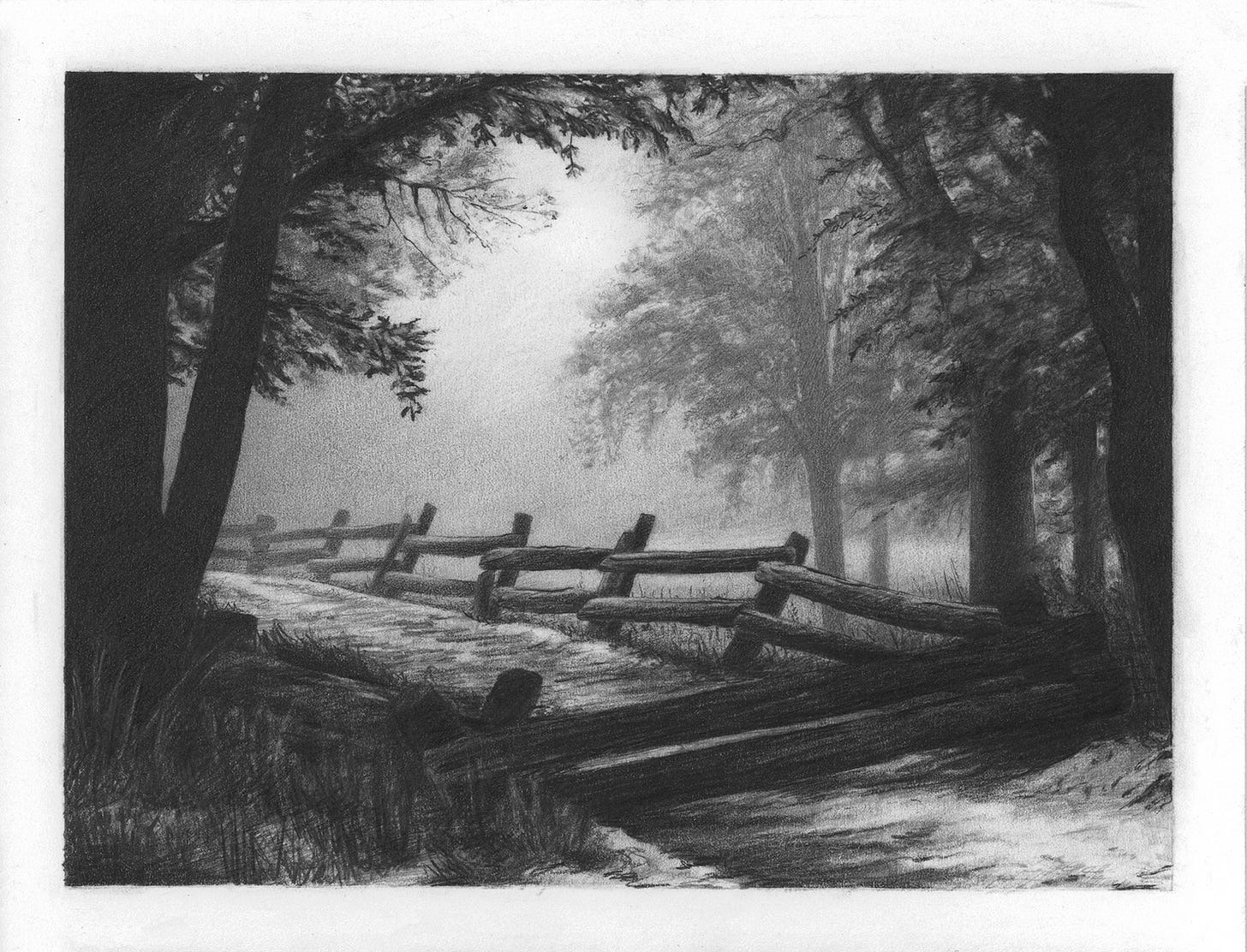Artist Statement: Chesterton's Fence
A closer look at the drawing.
I got to thinking that some Fashionably Late Takes subscribers might be curious about the decisions I make for the pencil drawings in each essay. So in this “Artist Statement” series, I share what influenced the artwork.
And if you’d like to read more from me this week, check out my latest from
. I’ll republish this piece on Fashionably Late Takes in a few months for those of you who don’t have a Quillette subscription:This drawing of Chesterton’s Fence goes with the essay “Resurrecting Ornamental Architecture,” in which I defend the usefulness of ornamentation with one of G. K. Chesterton’s most memorable metaphors:
In the matter of reforming things, as distinct from deforming them, there is one plain and simple principle; a principle which will probably be called a paradox. There exists in such a case a certain institution or law; let us say, for the sake of simplicity, a fence or gate erected across a road. The more modern type of reformer goes gaily up to it and says, “I don’t see the use of this; let us clear it away.” To which the more intelligent type of reformer will do well to answer: “If you don’t see the use of it, I certainly won’t let you clear it away. Go away and think. Then, when you can come back and tell me that you do see the use of it, I may allow you to destroy it.
As I wrote in that essay, “Chesterton's fence” cautions that we should always try to understand our customs before dismantling them — Chesterton elsewhere called tradition the “democracy of the dead”:
Tradition means giving a vote to most obscure of all classes, our ancestors. … Tradition refuses to submit to the small and arrogant oligarchy of those who merely happen to be walking about. All democrats object to men being disqualified by the accident of birth; tradition objects to their being disqualified by the accident of death.
So out of all the ways I could have depicted Chesterton’s Fence blocking a path, why did I choose this foggy scene?






